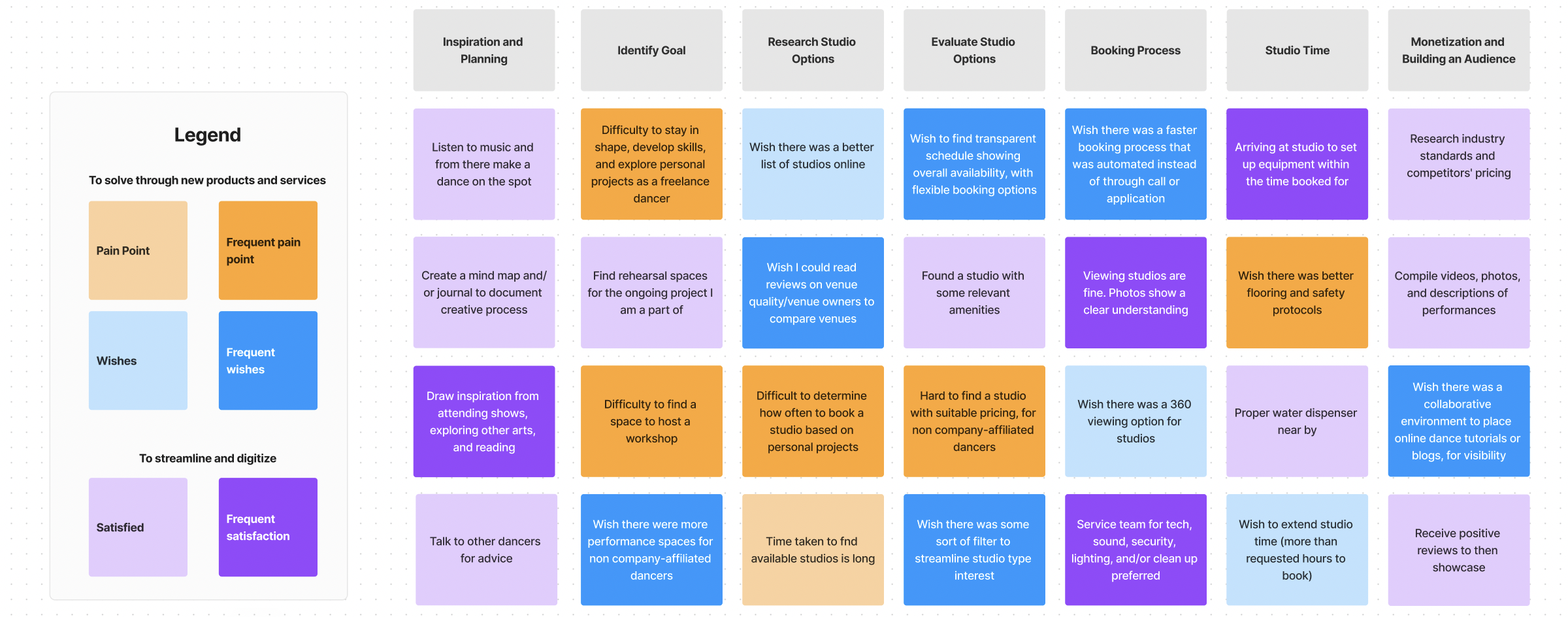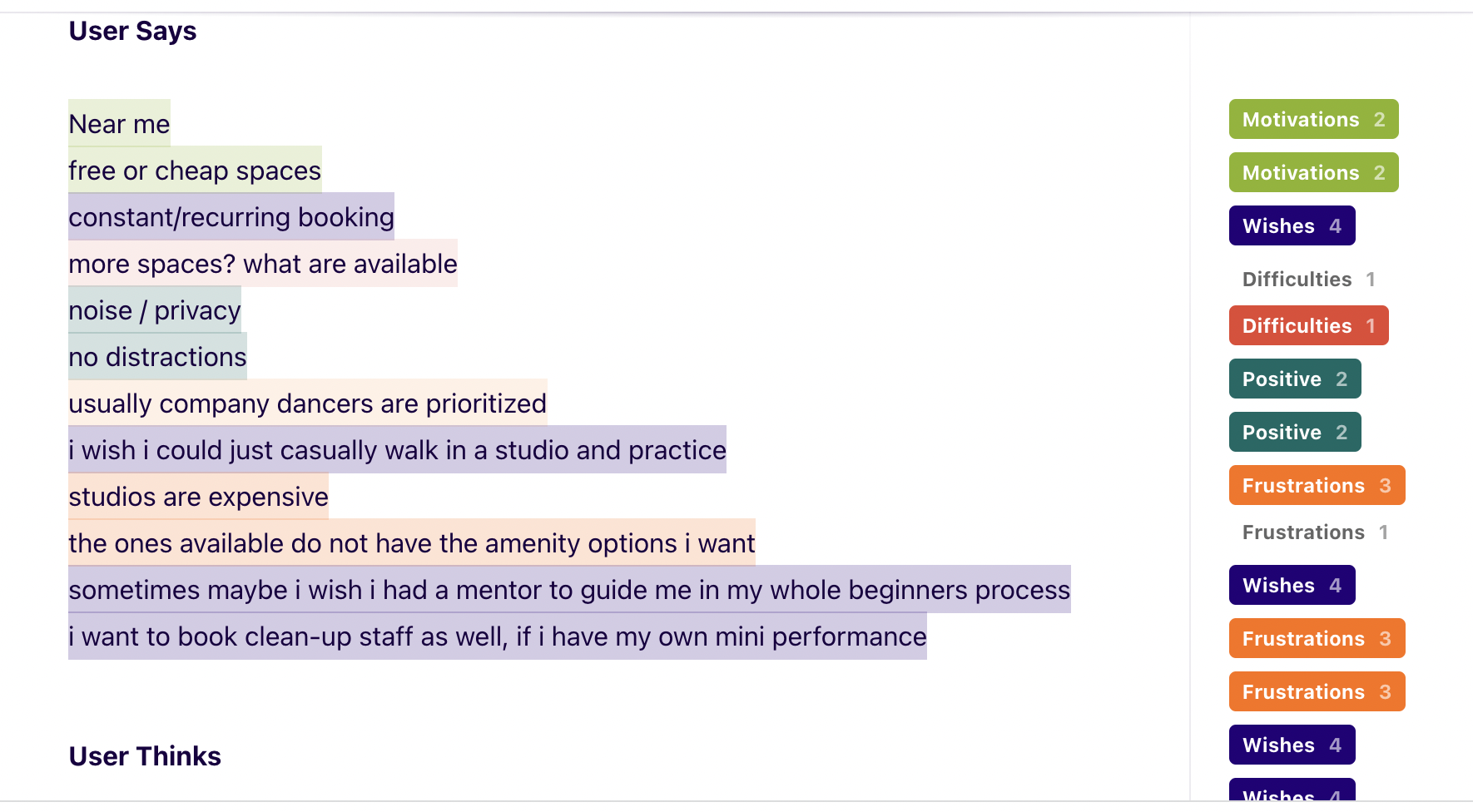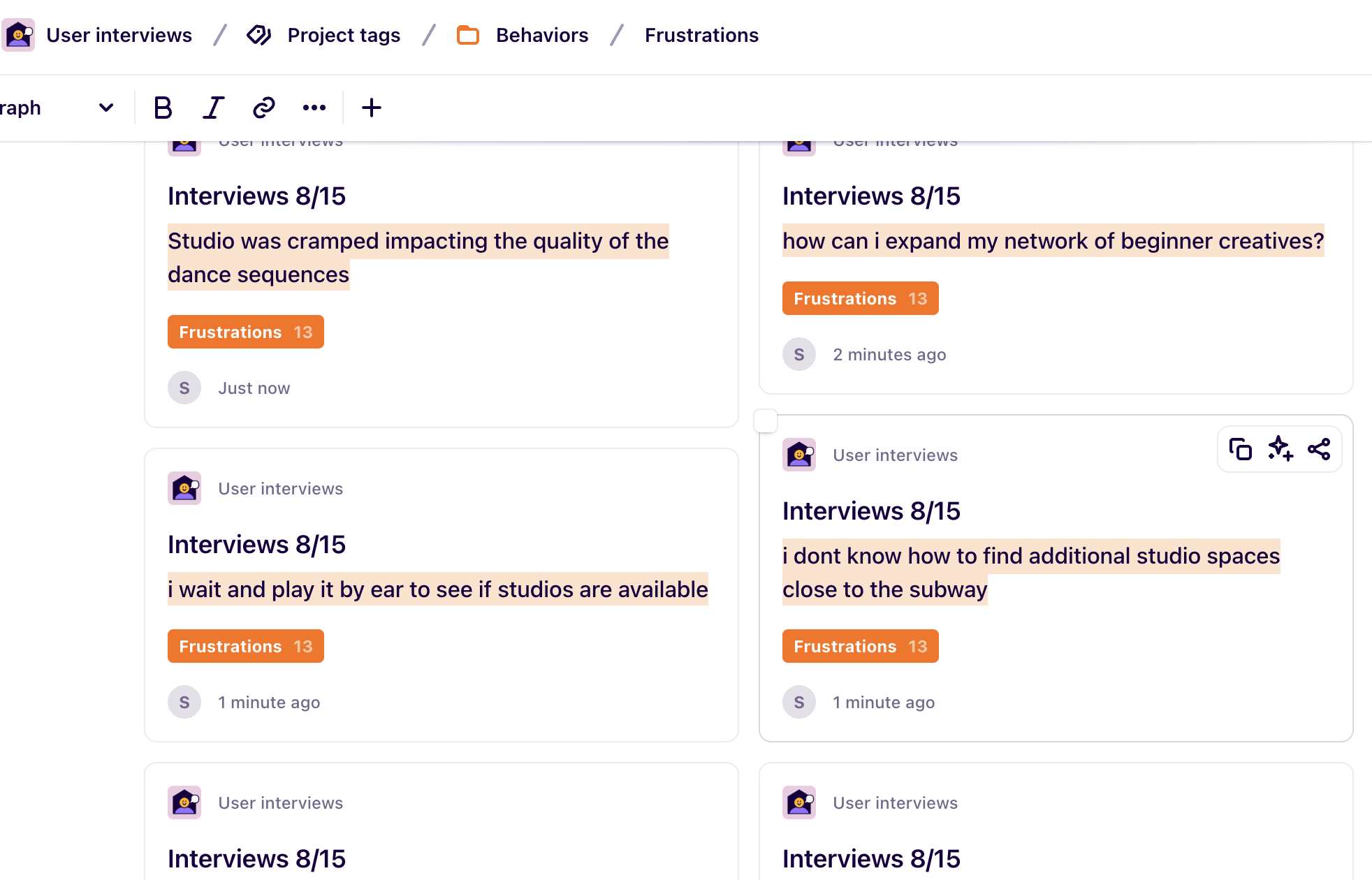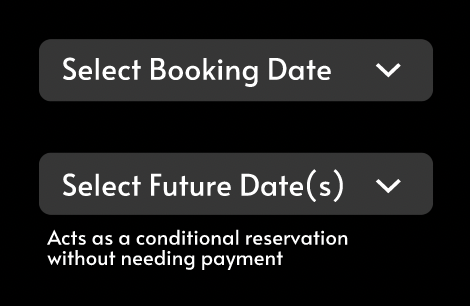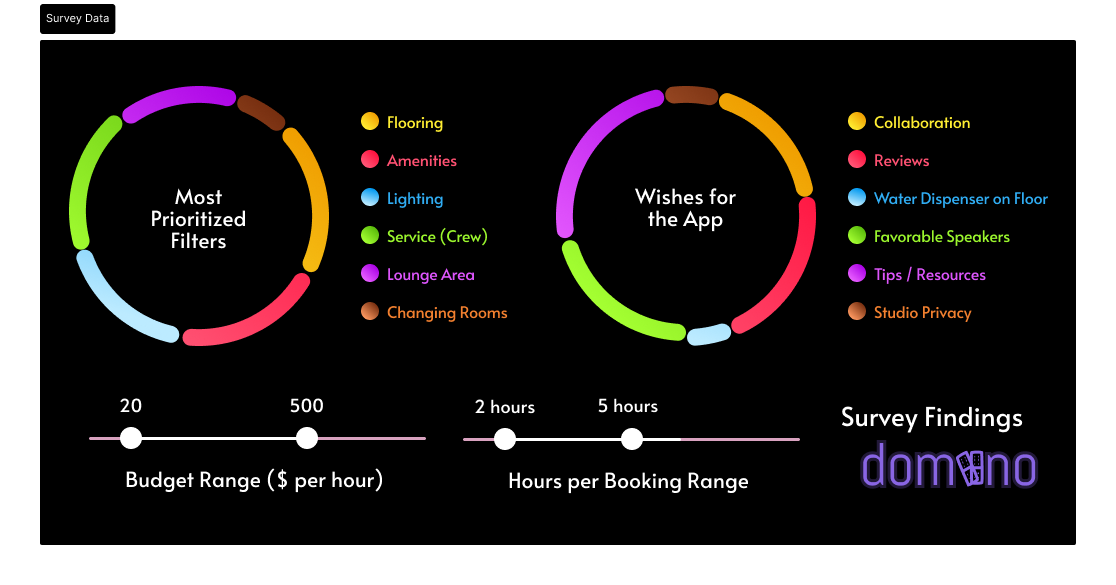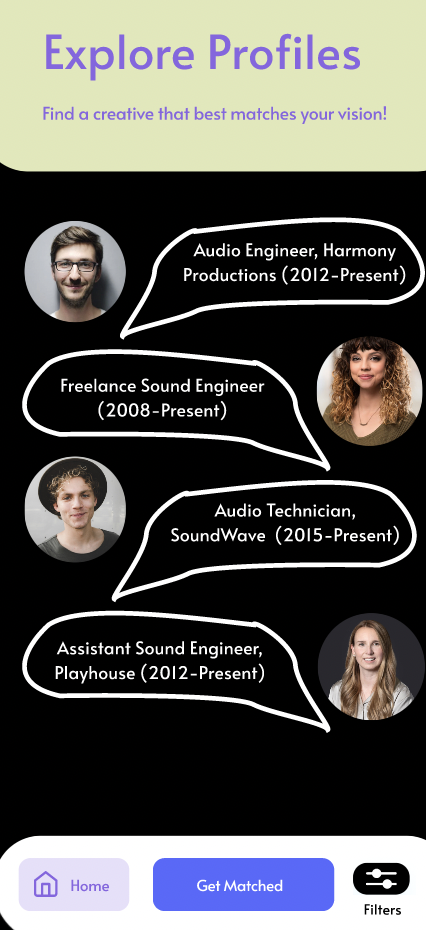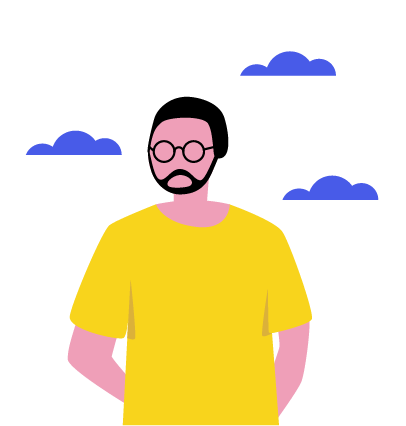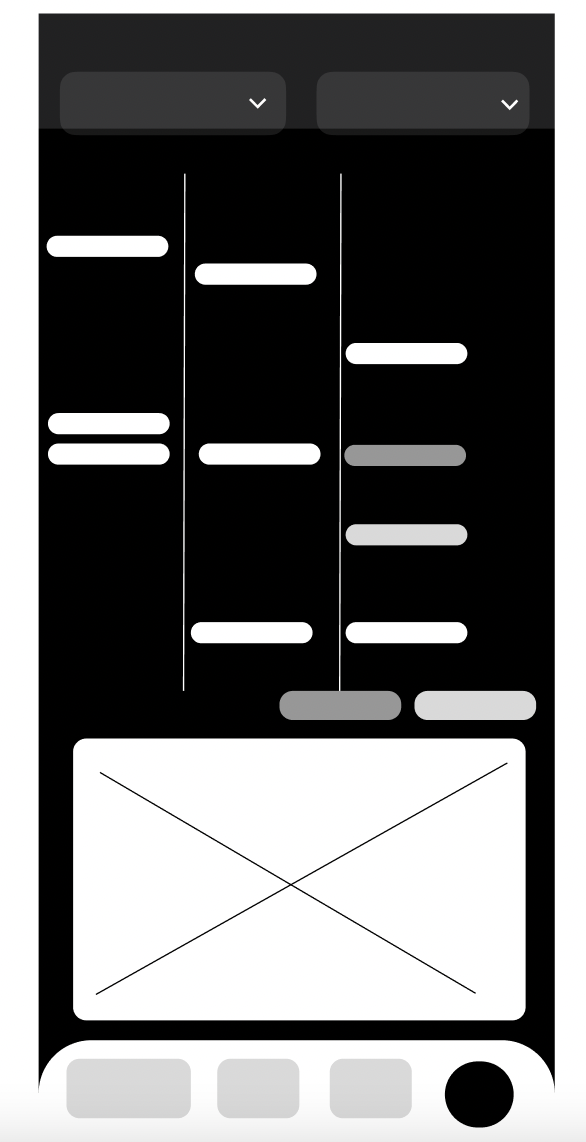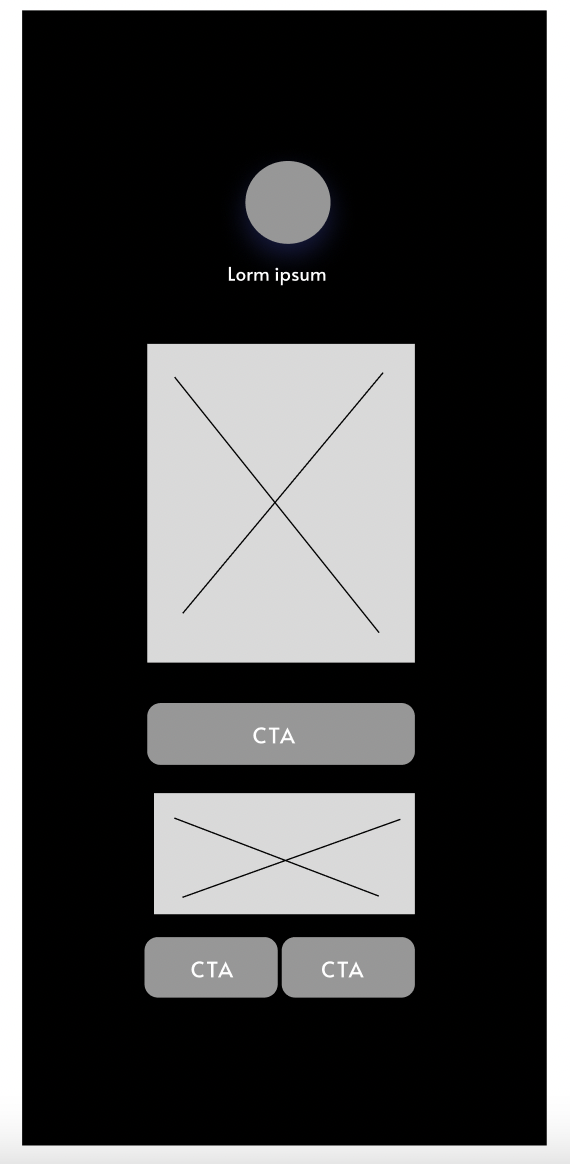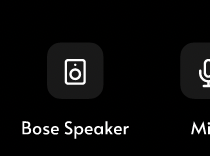EXECUTIVE SUMMARY
The Problem
Hypothesis
HMW…
Solution
NYC dancers and choreographers with limited budgets and unpredictable rehearsal schedules often struggle to secure affordable venues
I hypothesize that the implementation of a space rental app with a range of affordable studios will lead to improved creative growth and stability for freelance dancers in New York City's dance scene, as dancers can continue to create workshop opportunities and personal projects for additional income.
How might we increase access to safe and suitable venues for dancers where they can rehearse, perform, and collaborate to grow professionally and financially?
An affordable and flexible space booking platform that cuts the independent dancer’s studio-booking experience into three simple categories: the exploration & booking pane, the collaboration pane, and the tips and tricks pane.
Each pane would have relevant filters to cater to unique dancer needs
View Personas
The Methods:
Interviews
Diary Studies
Explore Your Creative Potential With Domino
What does Domino do for dancers?
Domino offers dancers a convenient and user-friendly application platform that allows them to efficiently book spaces at affordable rates and with flexibility. It provides dancers with a venue to explore and connect with other like-minded artists.
Competitive Audit
Surveys
Main Insights
Personalized search
Transparency and availability
Collaborative opportunities and advice from creatives
User Journey, Modified
The Research
Competitive Audit
I first conducted a complete analysis of an analogous business, PeerSpace. I asked users to walk-through direct studio rental website competitor Peer space’s website, identifying points of frustration or satisfaction. I asked users to also highlight their thought process when performing each task. I compiled insights into a spread sheet with the features “screen”, “user thoughts”, “usability issue description”, “usability heuristic type”, “severity” and “suggestions for improvement”. Insights from this research will be useful in the UI and functionality brainstorming for my own space rental solution app.
Diary Studies
To gain real time, authentic insights from freelance dancers in their experiences for more specific understandings of feelings and struggles, I performed a diary study research analysis. Such findings also validated the environmental scan and competitive audit findings, within a more specific realm of freelance and independent dancers as the target consumer.
Description: “In your studio booking process, diary your reactions from planning stage, rehearsing, to rebooking the studio. Highlight the blockages encountered, pain points, peaks, and wishes in your journal”
Interviews
My qualitative research findings (taken in an Empathy Map format to ensure “why” questions asked to generate answers from all 4 dimensions) were transcribed, coded, and organized on dovetail in order to be able to analyze the data collaboratively with teammates, and use it as a knowledge repository.
These interviews mostly validated insights gained through the diary studies, hence the importance of qualitative research triangulation. However, one important new insight gained was the wish to increase conditional studio booking, or in other words have the possibility of making future, and payment-free reservations. Another new insight is the wish to collaborate with other expertise
Surveys: To Inform Filters
To deepen previous insights on the preferences and priorities of artists when it comes to aesthetic, utilities, and scheduling of spaces, I began my quantitative research.
Description: Multiple choice and ranking-based questionnaire on a survey.
The Recurring Themes from User Responses
Insights…
Personalized Search and Information:
Tailored search options based on rental duration and purpose (with desired filters).
Relevant blog posts and rental history insights by creatives that tailor to the creative needs
of the user
Seamless integration of filters (eg. location, capacity, budget, space type) for a personalized
search.
Clear and accurate space information, including size and capacity details.
Additional sound and lighting crew rentals as an added filter
Transparency and Availability:
Comprehensive schedule view for exploring space availability broadly (map and list view).
Dedicated page highlighting amenities for a complete understanding.
Studio availability showcased through calendar, with the option to make future reservations
Collaboration and Advice:
Trust-building through real names and photos, enhancing community credibility.
Encouragement of collaboration among artists with compatible schedules and visions,
as indicated on the calendar.
Get matched with relevant expertise (AI compatibility and creative vision matcher)
for your vision, budget & schedule
Streamlined payment process with embedded payment choices.
Tips amnd tricks blog pages
Information Architecture
A Quick Black from the Past…
Style Guide
Stand Out Interaction Design Features:
-
One of the biggest takeaways from this exploratory research was that there was a difference between a “Dancer’s Space Booking Journey” and a “Dancer’s Brand Building Journey.” Rehearsing, performing, and hosting classes is not just an activity or a hobby, but a potential to boost the career for many of the independent dancers. I had only thought of a dancer journey as a space booking process to gain money from activities hosted in the venue, or work on their craft to stay in shape. I then realized that what I needed to explore further was the dancers’ brand-building journey. From this research, I modified the initial specific stages of a dancer booking a space to work in, to create the solution for 1. the process to be more efficient and suitable for their needs and 2. to include a networking and collaboration piece that is just as important as working on a personal dance piece. As my proposed space rental app for dancers, Domino, expands and becomes more than just an amateur space-booking app (of which already over-saturates the market). Domino is also a patform to expand creative knowledge with well established expertise in the creative field.
After many informal discussions around the strategic direction with my fellow dancer friends, I decided to target writers based on their space preferences, and their creative vision and motivations. I decided to name this group of dancers “BRAND-DANCERS.” This definition gave me a starting point for creating a market external to space-booking apps. To increase visibility and establish a unique branding for independent dancers to stand out, the app includes a “match me with expertise” option, based on compatibility of vision. Such creative expertise are established artists who are familiar working with dancers to produce interdisciplinary pieces or provide unique feedback
Visibility: Slider drag-up for additional service requests
Mapping: Calendar slots mimicking the apple calendar time placement blocks
Feedback: Loading as dominoes falling with falling sound to indicate completion of a final task
Constraint: Drop downs would have unhighlighted dates and times and capacity numbers to indicate unavailability
Affordance: Guidance in lighter vs. darker CTA buttons to showcase ability to proceed to next step
Consistency: Used a set of Feather Icons
USER TESTING
USER TESTING
For user testing, I gave users scenarios to inform the task they would perform on the app prototype. I timed each task to track user efficiency. After the task, I interviewed users on their experience drivers, and on how effective the implementation of certain usability heuristics were.
Results
Finding a Space:
Av. Heuristic Score: 3/5
‘Not enough visibility, leading to low efficiency, because I only could see the service rentals by the booking process. Just like amenities displayed, service crews should also be displayed in the viewing of a space.’
Finding a Collaborator
Av. Heuristic Score: 4/5
“Beautiful minimalism swiping/shuffling through matches. I just was not able to find the “get matched button” quick enough, and filtered the profiles manually instead.
Blogs Page
Av. Heuristic Score: 4.5/5
There should be consistency in the themes of blog posts with what people are adding to their visions on their profiles. Instead of a free search, it should just be a category drop down to give people guidance on possible creative directions
Next Steps…
Financial Guidance ("Financial Buddy"): Many freelance dancers struggle with managing their finances and understanding their income streams, which can be irregular. Integrating a financial guidance feature into the app could help dancers better manage their earnings, set budgets, plan for taxes, and save for the future. This could ease financial stress and contribute to their overall well-being. These can be little budgeting chat pop-up tips in every step of the booking process, of which are relevant to context of the dancer’s current freelance landscape and financial situation.
Future Plans for User Testing: I plan to perform user testing through the McKinsey customer satisfation and KPI model.
The Customer-experience Driver Analysis sets the foundation by identifying factors crucial to satisfaction.
The Journey Experience Assessment and Touch Point Experience Examination help pinpoint areas of improvement within the journey.
Experience Driver Identification helps refine strategies for targeted interventions.
Main Feature Component: Domino analysis ensures a focus on central experience aspects.
Service Level KPIs Enhancement provides quantifiable goals for tracking improvement.
In essence, this framework ensures that my efforts are data-driven, targeted, and aligned with the holistic customer journey, ultimately leading to an enhanced and more satisfying customer experience.
